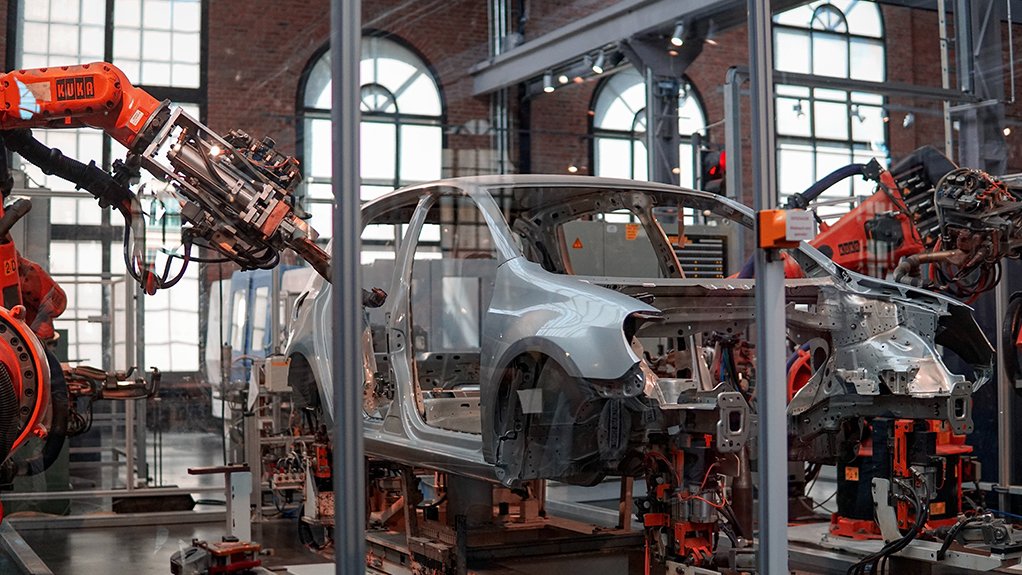There has been significant demand from the automotive sector for aluminium, owing to the need for lightweight material in internal combustion engine (ICE) and electric vehicles. The use of aluminium in vehicle production has been steadily increasing, displacing alternative materials over the years, without showing signs of slowing down, says Aluminium Federation of South Africa (Afsa) CEO Muzi Manzi.
Electric- and ICE vehicle manufacturers are aware of aluminium’s application potential. The quotient of sustainability and weight reduction is effective in the production of energy efficient vehicles.
Using aluminium in this domain will be irreplaceable once customer demand evolves to choosing energy efficient vehicles to protect the environment, he adds.
When used in automobiles, aluminium can significantly improve performance and fuel economy; it is also “extremely” valuable in the transportation industry, owing to its strength-to-weight ratio.
However, Manzi says the only challenge with the metal is that it is perceived as more expensive when compared with alternative materials in similar applications.
“This was the case a few years ago, to the extent that the use of aluminium in automobiles was relegated to high-end automotive brands and models; however, its use has become very widespread since then.”
He cites as an example of the maximum use of aluminium in automobile manufacturer Ford’s model F150 truck, which currently boasts the highest aluminium content among motor manufacturers.
Aluminium provides many benefits when used to manufacture vehicles, says Manzi.
It oxidises quickly, fending off additional corrosion from air, water and chemicals; changes colour easily with anodisation, which allows it to retain paint very well; and transmits electricity more effectively.
Aluminium can also be recycled without losing its material properties, and its ability to conduct heat makes it useful for automotive heat exchangers and engine heat shields.
“It is for these reasons that aluminium is an important material in the automotive industry. It is the fastest-growing material used in vehicle manufacturing, owing to manufacturers’ adopting better materials to reduce carbon emissions.”
Further, the resultant energy and fuel efficiency, owing to aluminium’s reducing the overall weight of vehicles, exceeds the perceived elevated pricing of aluminium in the automotive sector, he notes.
Aluminium Production
South Africa remains the largest aluminium-producing country in Africa having produced more than 714 000 t of refined aluminium in 2021. South Africa imports alumina from Australia which is derived from refining bauxite, the alumina is then smelted locally at mining and metals company South 32’s Hillside smelter in Richards Bay, KwaZulu-Natal.
Manzi states that South Africa is the largest aluminium-producing country in Africa based on the local smelting capacity.
The other smelter, Bayside Casthouse, owned by aluminium company Isizinda Aluminium, was shut down between 2008 and 2010.
However, Manzi says that molten aluminium is still transported from the Hillside smelter to the old Bayside smelter facility for the production of rolling slab aluminium which is distributed to rolled aluminium specialists Hulamin in Pietermaritzburg for the production of rolled products.
In addition, Manzi says that smelters use baseload and loadshedding ordinarily is a peak demand problem. Smelters are able to – at short notice – curtail production to assist State-owned power utility Eskom. However, without baseload demand from a renowned client, Eskom will likely not have a reliable source of revenue considering that municipalities are faltering in paying for power.
“We have recently witnessed a significant growth in secondary metal production locally, owing to the support measures put in place by government through a preferential pricing scheme.”
There has also been a sustained production increase of rim alloys for the production of alloy wheels and other automotive related alloys for the export market.
Afsa believes that demand for the metal will continue to rise, in tandem with a rising local and global economy, as major demand is likely to come from the packaging, construction and automotive sectors.
Edited by: Nadine James
Features Deputy Editor
EMAIL THIS ARTICLE SAVE THIS ARTICLE
ARTICLE ENQUIRY
To subscribe email subscriptions@creamermedia.co.za or click here
To advertise email advertising@creamermedia.co.za or click here













